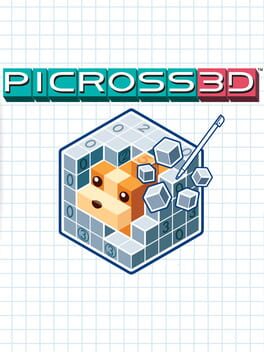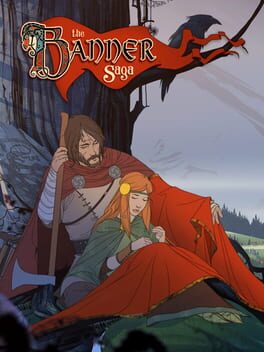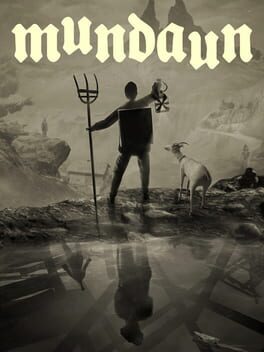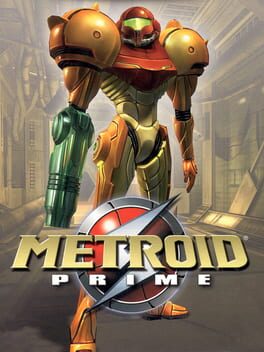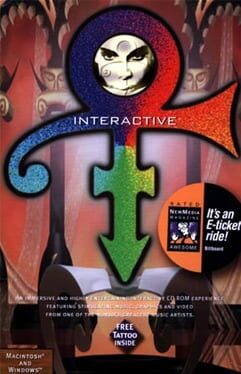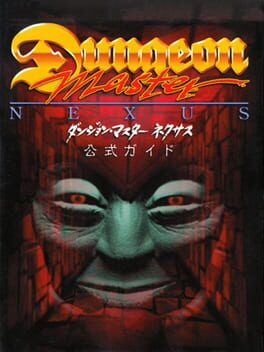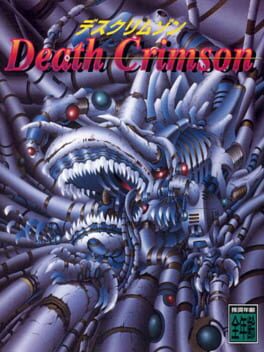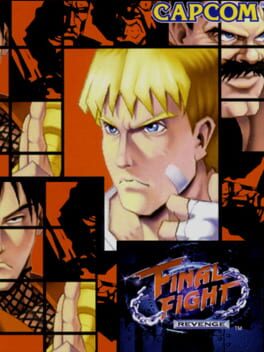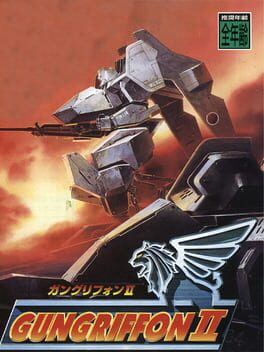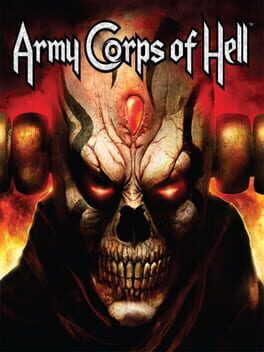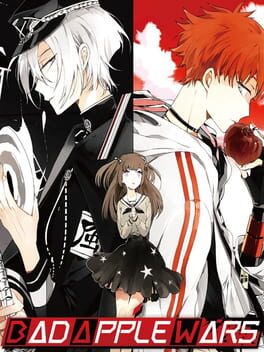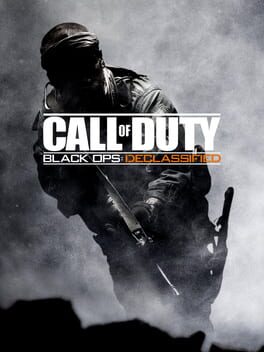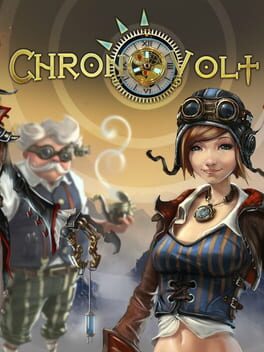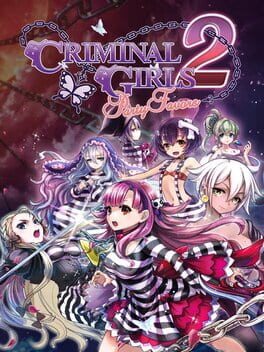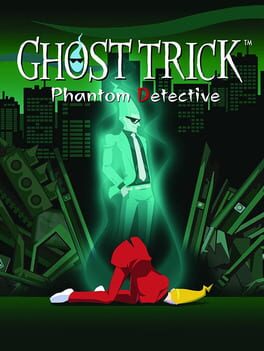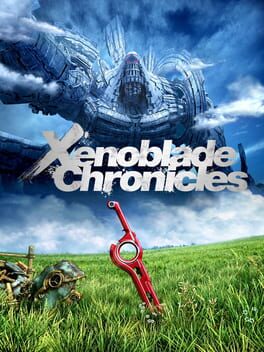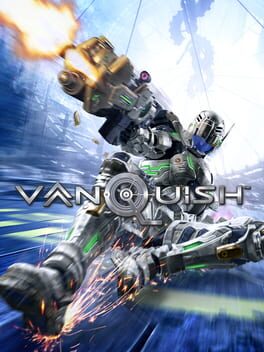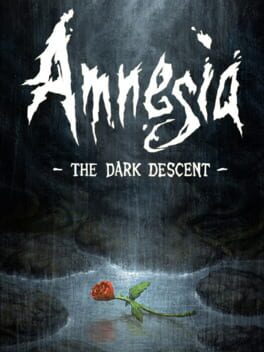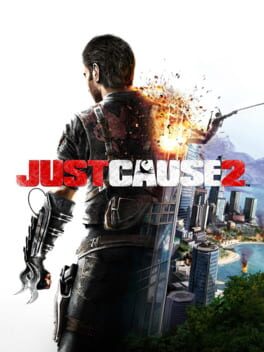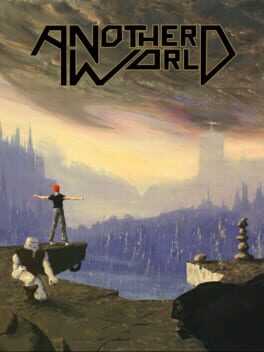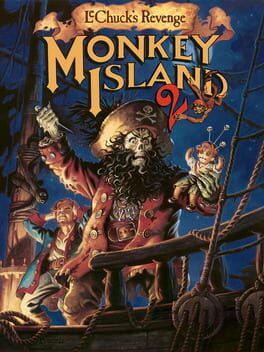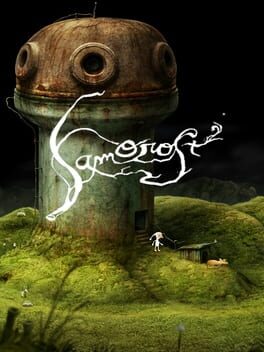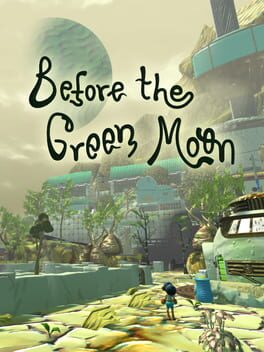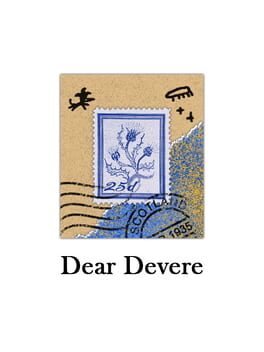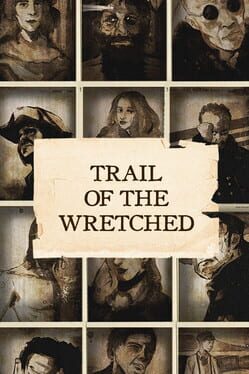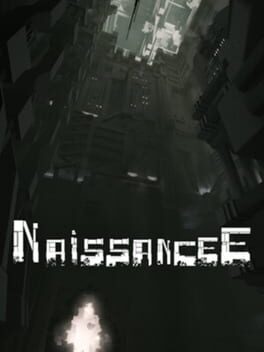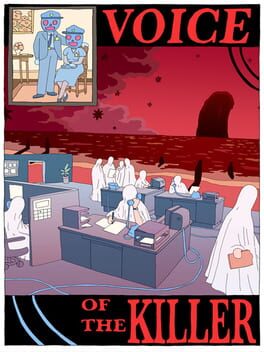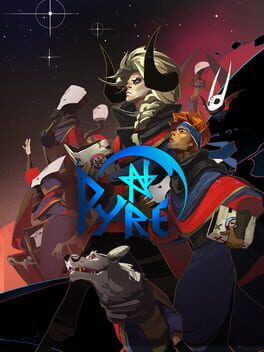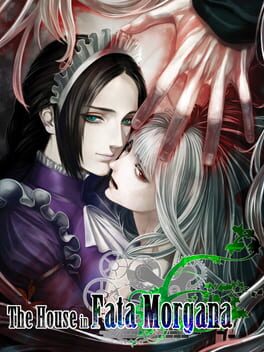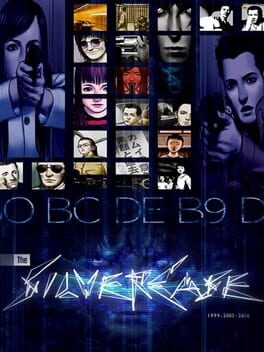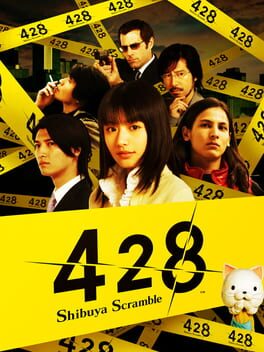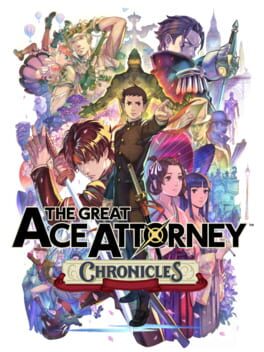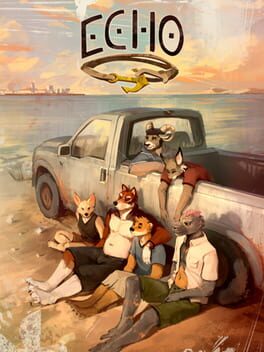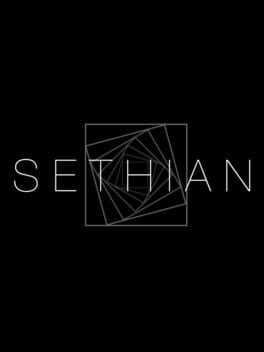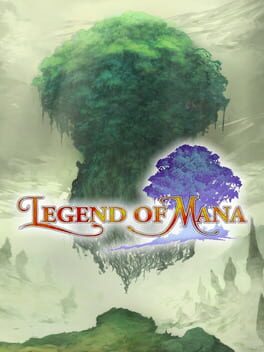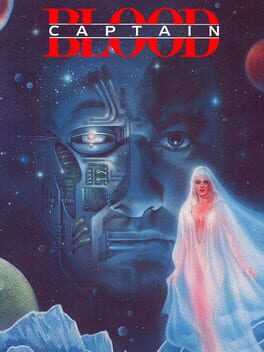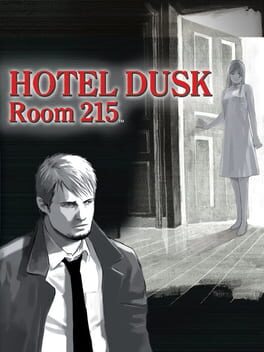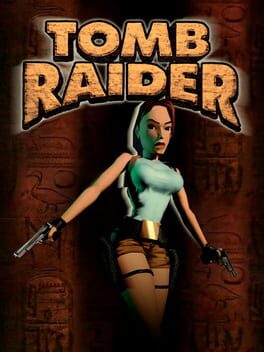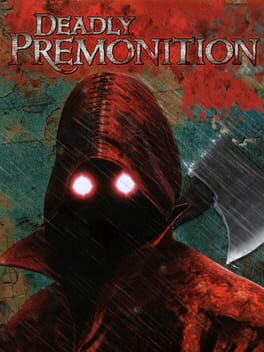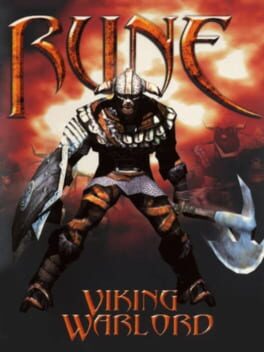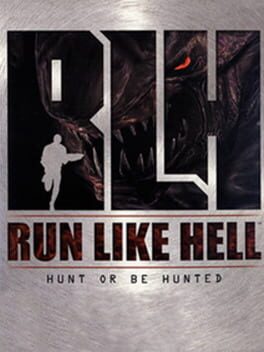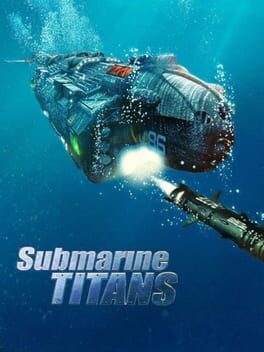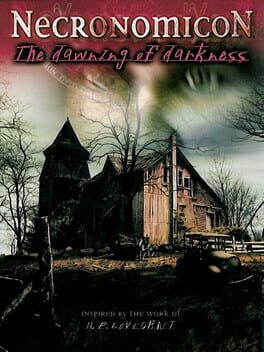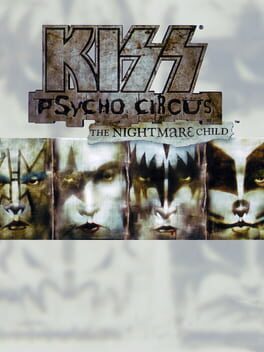triales
BACKER
69 reviews liked by triales
Picross 3D
2009
very smart reinterpretation of traditional picross in 3D that fits perfectly on the DS. those familiar with picross will find this game easy to understand at the beginning but with its own set of idioms to be learned compared to when playing in 2D. unlike the classic jupiter picross games, this one limits you to five mistakes before failing rather than mistakes adding on time to the timer. I also felt like the timers here were much more generous, though it takes some quick thinking to finish quick enough to gain a star in this game's form of a ranking system. by accumulating stars via finishing without mistakes or by finishing quickly, a silver and gold bonus puzzle for each rank is unlocked, which ends up being about 60 extra puzzles in all (I didn't do most of these). there's also a variety of special challenges in between ranks, including ones where you start with a short timer and have to extend it by breaking blocks quickly as well as larger objects made up of many small puzzles. there's a real kinetic feel to chipping away at blocks in this game that you don't quite get when it's in 2D.
my major criticism is that the difficulty scaling sort of peters out around the middle of Normal. there aren't too many new ideas to keep track of beyond that point other than the occasional cheap moments where you're forced to guess which blocks need to be removed (though this game follows symmetry a lot more frequently than the 2D puzzles). you can tell they had to work to wring challenge at all out of the concept as each puzzle has number hints specifically removed from certain columns and rows, unlike in regular picross where each row and column has a number hint without exceptions. it makes this game feel a little more scriptd in how each puzzle is solved, which isn't necessarily bad but definitely contributes to the aforementioned issue.
regardless, definitely a good choice to pop onto an SD card and play while something else is on in the background. the DS is hand-built for these kinds of interesting puzzle concepts.
my major criticism is that the difficulty scaling sort of peters out around the middle of Normal. there aren't too many new ideas to keep track of beyond that point other than the occasional cheap moments where you're forced to guess which blocks need to be removed (though this game follows symmetry a lot more frequently than the 2D puzzles). you can tell they had to work to wring challenge at all out of the concept as each puzzle has number hints specifically removed from certain columns and rows, unlike in regular picross where each row and column has a number hint without exceptions. it makes this game feel a little more scriptd in how each puzzle is solved, which isn't necessarily bad but definitely contributes to the aforementioned issue.
regardless, definitely a good choice to pop onto an SD card and play while something else is on in the background. the DS is hand-built for these kinds of interesting puzzle concepts.
The Banner Saga
2014
the banner saga is the fantasy epic of our times. visiting it again, my appreciation for everything it achieves grows deeper. games as economy require clever solutions for costly goals, and the format of traveling via a caravan allow the fantasy of a world fully immersed and realized for the player. indeed, the game evokes a long history buried in the deep snow of the north, one of a fragile peace subsiding once again to old war and devastation, and seemingly even further: total annihilation. we see only the edges of this in this game, and the ending haunts of what is to come.
on this playthrough i played the campaign on hard difficulty, and the emphasis on attrition of resources became even greater. the tactical combat layer to the game i think is misunderstood and i think even underrated, but it is understandable. in traditional turn-based tactics game, the meta is undoubtedly to focus a single target, whittling them down one-by-one. the banner saga's combination of health and attack power into one stat dramatically changes this. indeed, there is little point to killing an enemy who has one strength left, or more importantly: an enemy who has less strength than any of your roster. if you waste your resources on inefficient targets, you can easily find yourself at the end being picked off by those you left alone.
the game is richest when you're in this cycle of carefully utilizing your resources. renown can be used to buy supplies which keep the caravan strong and thriving, but also to buy trinkets or direct upgrades for your troops. there are many optional battles too that may reward renown and supplies, but fights can be costly and you can rack up injuries on your troops which dramatically undermine their combat ability. in many tactics games you often maintain a single roster, but on hard difficulty it askes you to be effective with many. most games struggle to have meaningful difficulty, i feel, but banner saga realizes its metaplay quite well and it feels fair all around.
i move now to continue the series with the banner saga 2.
on this playthrough i played the campaign on hard difficulty, and the emphasis on attrition of resources became even greater. the tactical combat layer to the game i think is misunderstood and i think even underrated, but it is understandable. in traditional turn-based tactics game, the meta is undoubtedly to focus a single target, whittling them down one-by-one. the banner saga's combination of health and attack power into one stat dramatically changes this. indeed, there is little point to killing an enemy who has one strength left, or more importantly: an enemy who has less strength than any of your roster. if you waste your resources on inefficient targets, you can easily find yourself at the end being picked off by those you left alone.
the game is richest when you're in this cycle of carefully utilizing your resources. renown can be used to buy supplies which keep the caravan strong and thriving, but also to buy trinkets or direct upgrades for your troops. there are many optional battles too that may reward renown and supplies, but fights can be costly and you can rack up injuries on your troops which dramatically undermine their combat ability. in many tactics games you often maintain a single roster, but on hard difficulty it askes you to be effective with many. most games struggle to have meaningful difficulty, i feel, but banner saga realizes its metaplay quite well and it feels fair all around.
i move now to continue the series with the banner saga 2.
Mundaun
2021
Mundaun’s first-person horror threats are recurring, and increase in number as the game progresses, and yet it retains the feeling of a walking sim. I mean this in the positive sense of environmental specificity, of wandering a landscape saturated in a history that precedes us, and which reveals itself in small, partial ways as we traverse it. I also mean it in the sense of an environmental intimacy. There is a second-hand nostalgia given to us by our virtual body (Curdin), who is prone to personal reminiscences as we uncover Mundaun’s mysteries together in real-time. This is to say the game conditions us to experience its landscape as both alien and profoundly intimate, and it is the intimacy that is most charged with folk-horrific dread. For the player who frequently feels as though there is a strange force watching them from within the world of the walking sim, Mundaun’s dread is most welcoming.
By capturing us in reminiscence and providing us with real-time tangible threats, Mundaun makes pronounced the strange negotiations of gamic tense. When I feel as though this is a walking sim, I consider my efforts oriented to the recovery of some past hidden in the landscape; when I feel as though it is survival horror I am attuned to the anxiety of the instant. This is not in itself novel — any game with attention to its world balances the time before us (past) with the time of action (now) — but Mundaun amplifies this tension through the strength of its environmental intimacy and the beckoning of its reminiscence within the horror format. That is its narrative, like its enemies, unfolds in real-time. Curdin has returned to his grandfather’s village for his funeral, and this return precipitates the series of events that is Mundaun. We talk to its inhabitants, run errands, solve puzzles, our actions all assisting in the progression of a narrative that has not yet occurred. And yet because of the game’s mood, the narrative still to come seems always already lost in the past. Who are these people? Are they still alive? Who attends Jeremias’ (the priest’s) sermons? H.R., the talking corpse in the snow? Walther, deep in his forgotten wartime bunker? The spectral Flurina? Playing Mundaun is wandering a buried village, its inhabitants trapped and reenacting the ghost story that binds them to this beautiful, tragic mountain village. In the end they asked me to return, but in the light of day I saw it for what it was. It’s over, I thought, forever now.
In terms of how it plays with or without this doomed mood, Mundaun’s enemies are consistent with its local geography, staggering through the hills. The hay creatures are frightening because they look like the haystacks we keep passing, and because their idiot-physicality gives them a sense of random, thoughtless weight more dreadful than a human-like intelligence. The beekeepers on the other hand hover — something I didn’t realise until I got too close, and which promptly brought to mind the haunting image of the Blair Witch “whose feet never touched the ground”. Both in their own way make our adoptive body in Curdin feel particularly leaden, and ill-equipped to respond to the world and its demands. He becomes the little boy, gazing terrified out the window of his grandfather’s house, believing all at once his superstitions. Mundaun’s puzzles carve a linear path through the world, providing us tasks to advance the day so that narrative time can proceed. Most impressive is the way that, as the story comes together and its emotions are made to resonate, the developers maintain the same patience that welcomed us in. It becomes ‘big’ but it is never loud, scripted sequences takes over but it still pretends it’s off-kilter, about to fall apart. It’s so good that it never wants you to know quite how good it is.
There's something to be said that I can't quite figure out yet about the way we are 'cursed' on arrival. It is only when the Old Man grabs us, deforming our arm, that Mundaun opens itself to us. I've tried to put into words elsewhere how a similar maiming of the arm takes place in Resident Evil 7 — we are 'welcome(d) to the family' only after our arm is cut off and reattached, making us kin to the Baker family. Despite their significant differences (both as texts and in their treatment of the arm), Mundaun is similarly interested in the notion of homecoming as a kind of physical maiming. The simple pathos of this sets in when, departing on the bus, our business concluded in our grandfather's ghost village, we look down to see our arm still deformed. Perhaps this is the cost of 'being there' in the world of the game, our physical bodies conjoined with Curdin's, Curdin's with Mundaun. Or perhaps more generally it's the cost of reminiscence, memory being the wound that cannot heal.
By capturing us in reminiscence and providing us with real-time tangible threats, Mundaun makes pronounced the strange negotiations of gamic tense. When I feel as though this is a walking sim, I consider my efforts oriented to the recovery of some past hidden in the landscape; when I feel as though it is survival horror I am attuned to the anxiety of the instant. This is not in itself novel — any game with attention to its world balances the time before us (past) with the time of action (now) — but Mundaun amplifies this tension through the strength of its environmental intimacy and the beckoning of its reminiscence within the horror format. That is its narrative, like its enemies, unfolds in real-time. Curdin has returned to his grandfather’s village for his funeral, and this return precipitates the series of events that is Mundaun. We talk to its inhabitants, run errands, solve puzzles, our actions all assisting in the progression of a narrative that has not yet occurred. And yet because of the game’s mood, the narrative still to come seems always already lost in the past. Who are these people? Are they still alive? Who attends Jeremias’ (the priest’s) sermons? H.R., the talking corpse in the snow? Walther, deep in his forgotten wartime bunker? The spectral Flurina? Playing Mundaun is wandering a buried village, its inhabitants trapped and reenacting the ghost story that binds them to this beautiful, tragic mountain village. In the end they asked me to return, but in the light of day I saw it for what it was. It’s over, I thought, forever now.
In terms of how it plays with or without this doomed mood, Mundaun’s enemies are consistent with its local geography, staggering through the hills. The hay creatures are frightening because they look like the haystacks we keep passing, and because their idiot-physicality gives them a sense of random, thoughtless weight more dreadful than a human-like intelligence. The beekeepers on the other hand hover — something I didn’t realise until I got too close, and which promptly brought to mind the haunting image of the Blair Witch “whose feet never touched the ground”. Both in their own way make our adoptive body in Curdin feel particularly leaden, and ill-equipped to respond to the world and its demands. He becomes the little boy, gazing terrified out the window of his grandfather’s house, believing all at once his superstitions. Mundaun’s puzzles carve a linear path through the world, providing us tasks to advance the day so that narrative time can proceed. Most impressive is the way that, as the story comes together and its emotions are made to resonate, the developers maintain the same patience that welcomed us in. It becomes ‘big’ but it is never loud, scripted sequences takes over but it still pretends it’s off-kilter, about to fall apart. It’s so good that it never wants you to know quite how good it is.
There's something to be said that I can't quite figure out yet about the way we are 'cursed' on arrival. It is only when the Old Man grabs us, deforming our arm, that Mundaun opens itself to us. I've tried to put into words elsewhere how a similar maiming of the arm takes place in Resident Evil 7 — we are 'welcome(d) to the family' only after our arm is cut off and reattached, making us kin to the Baker family. Despite their significant differences (both as texts and in their treatment of the arm), Mundaun is similarly interested in the notion of homecoming as a kind of physical maiming. The simple pathos of this sets in when, departing on the bus, our business concluded in our grandfather's ghost village, we look down to see our arm still deformed. Perhaps this is the cost of 'being there' in the world of the game, our physical bodies conjoined with Curdin's, Curdin's with Mundaun. Or perhaps more generally it's the cost of reminiscence, memory being the wound that cannot heal.
Mundaun
2021
Munduan feels as if it is held together by tape and will unravel at any moment. Movement and animations stop and start with sharp twitches and weapons shiver in your hands. The hand-drawn textures wrap around the low-poly world with uncomfortable tension, like crude sketches over cardboard backdrops.
Exploration of the world evokes Highway 17 meets Resident Evil. Instead of a buggy you commandeer a janky old harvester and instead of safe rooms you take refuge in safe houses, welcoming spaces for brewing coffee and tending to your journal. Creatures wander the landscape in a quaint manner, almost like mobs populating 90s platformers (recalling my childhood fear of evading the enemies of Croc 2 or Gex).
Supernatural events take shape in the world in the form of optical illusions, animated shadows and altered reflections, taking a similar approach to the hard artificial limitations of the artwork. The sound design gives texture to every object in your inventory, and the soundscape of the mountains is full of ambient winds and eerie stillness. “Close up sounds” (according to their sound designer) bring to life paintings and photos(?) found in the world, hinting at muffled voices from the past.
Exploration of the world evokes Highway 17 meets Resident Evil. Instead of a buggy you commandeer a janky old harvester and instead of safe rooms you take refuge in safe houses, welcoming spaces for brewing coffee and tending to your journal. Creatures wander the landscape in a quaint manner, almost like mobs populating 90s platformers (recalling my childhood fear of evading the enemies of Croc 2 or Gex).
Supernatural events take shape in the world in the form of optical illusions, animated shadows and altered reflections, taking a similar approach to the hard artificial limitations of the artwork. The sound design gives texture to every object in your inventory, and the soundscape of the mountains is full of ambient winds and eerie stillness. “Close up sounds” (according to their sound designer) bring to life paintings and photos(?) found in the world, hinting at muffled voices from the past.
Metroid Prime
2002
+this and re4 make gcn the go-to for best-of-all-time tank controls. obviously it's cheating a little bit here since you can toggle into strafing at any time, but I think it accurately captures the feeling of super metroid: just a wee bit clunky, but satisfying in its own way.
+another gcn-era relic: cutting-edge visuals on nintendo hardware. part of this is because of smart constraints on room sizes, but even bigger areas never drop in quality. runs at a smooth 60fps too!
+incorporating samus' visor into the UI is done so effectively and effortlessly that I'm surprised more developers haven't keyed in on this. it helps establish her sense of identity even without dialogue, and the reflection of her face in the glass is always stunning.
+having the temple + artifacts open from the get-go was a really smart choice. I didn't run into that many before the endgame but whenever I found one early I felt rather accomplished!
+hint system was honestly a smart move here. there's a lot of jumping back and forth between regions, and with the map not giving a lot of insight into where various "locks" are placed, it was good to get some insight into next steps.
+the morph ball translates so perfectly into 3D that I'm shocked they got it first try. legitimately fun to roll around in it, and including bomb jumping puzzles was a neat addition.
+environmental variety is absolutely on point, especially when it comes to memorable landmarks. I suppose part of this is because about half of the rooms in the game are loading hallways (god did my wii sound like it was choking playing this) but even revisiting old areas I never felt lost or confused at my location. each chunk of each region realizes an internal narrative and relation to the world around it that really hits the mark, especailly in phendrana drifts.
+I was surprised at how well the platforming was handled in this game, especially since the gravity jump boots are obtained so early on. given how constrainted the field of view is it's surprising how natural it feels. being able to switch to strafing in the air is also a clever moves on the devs part.
+scanning is such an inspired addition, both in that it's highly optional and yet allows for easy story-telling potential without moving into proper cutscene territory. the space pirates' commitment to methodical and structured evil is a little too on-the-nose, but their legitimate fear of samus and their own observations of tallon iv yield a surprising amount of depth. being able to scan enemies to quickly understand their behavior is an excellent strategy for a game like this as well.
+overall the first half is meticulously crafted and perfectly captures metroid's solemn exploration in 3D. gaining insight into the death of the chozo's civilization, wandering their ruins, solving small puzzles, and encountering each new area without significant threat is almost relaxing, which I rarely experience in first-person shooters.
+I honestly prefer having puzzles for most obtainable items rather than the more common movement-based challenges of the 2D series. there are so many unique contraptions around tallon iv that encourage creativity and experimentation!
+frigate orpheon is an all-time classic game opening, and such a smart way to acclimate the player to the controls before their kit is wrested away from them.
-a defining part of metroid to me is the power scaling: the annoyances you'd face traversing through hallways of creepy-crawlies melts away when you can tear through whole areas with the space jump and the screw attack. enemies are temporary obstacles in most cases to avoid backtracking from becoming stale. here, the game will throw stronger enemies into certain rooms as the game progresses, and you lack the same sort of all-encompassing firepower as in previous iterations. makes backtracking more of an annoyance than it should be.
-beam-switching is a core mechanic in the second half of the game and I hate it. if switching were snappier I would be less opposed, but it's cumbersome and sometimes unresponsive. it also inordinately unbalances enemies: ice pirates are trivial to eliminate since they can be frozen, but the regular beam pirates only take damage from your standard pea shooter, and thus are much harder to deal with. having to switch them constantly for doors is a bit of a hassle too.
-power bombs are effectively useless outside of opening doors. so much wasted potential. in the room right after you get them there's four security turrets that seem to imply the power bomb would be useful, and yet they aren't!
-late game pacing really suffers. there's a point where you get the x-ray visor, the power bomb, and the grapple hook back-to-back, and it makes it difficult to tell what should be used next. this is esp an issue for x-ray visor: there really needed to be a way to tell when it should be used to find hidden platforms (looking at you metroid quarantine A)
-having to return to the temple to get more hints for the artifact hunt is unquestionably a timewaster. making a full round trip to collect everything would have been much more satisfying than having to do it in two.
-the map really needed better visualization of where various locks are. there's too much to commit to memory!
-x-ray visor as a whole... was this supposed to be used to locate hidden items? because for the most part walking around with it on made me feel like I couldn't see two feet in front of my face. this is something that also should have been included in the map! tho I got 66% which is def better than some of the other metroid games I've played.
-boost ball sucks to use imo. takes a while to charge, and the game is really picky in the half-pipes about not having your thumb on the analog stick when you release the boost
-strafe-dash feels unresponsive. imo it comes down to controller limitation, since having it overide strafe-jumping is annoying and it would have made a lot more sense with a dedicated button (making it accessible without lock-on).
-not a single good boss. every single one far wears out its welcome, lacks moveset variety, and forces the player to wait around to open its weak point. ridley may be the most offensive one to me: he's always been a total slugfest, fire off your weaponry as fast as possible and dodge when you can. here I felt like I spent so much of his fight waiting for his mouth to be open or for him to fly closer to the ground.
-the special moves for each beam type are not very useful in combat given how easily they can miss and how long they take to charge up. wavebuster I at least used on wave pirates occasionally (even though they chug missiles like crazy), but I never used the ones for ice or plasma in a practical setting.
I wasn't sure how to structure this review initially... to tell the truth, I picked this game up much more seriously after a series of anxiety attacks led me to quit smoking weed cold turkey. this has been my rock as I've dealt with the withdrawal symptoms, and my daily accompaniment to relax the onset of anxiety, restlessness, insomnia, and constant aches and pains. it's also a game that is deeply nostalgic to me, as my dad played this series regularly when I was a child, and I often would poke around each one myself. I was never adept enough as a child to progress much further than chozo ruins, but returning now made me feel at home, able to absorb myself into samus as we push through a vast wilderness filled with quiet contemplation.
the above is why the second half saddens me so much: every qualm and quibble I have came into such sharp focus as the finish line drew near. it doesn't surprise me -- it's in a long line of obviously-rushed nintendo titles from the GCN era, and retro especially is known for their egregiously poor work policies and crunch -- but it left such a sour taste in my mouth that I can't help but document all of the annoyance and frustration it heaped upon me as I've physically recovered. I can hardly call it a bad game, but it's a shame that the joy this game brought me in the last week has been blotted out by other aspects that perhaps didn't need to overshadow how quintessential the start was. regardless, finally having this game behind me feels like a bit of a turning point, and I can't help but feel almost giddy having two more of these to play in the upcoming months.
+another gcn-era relic: cutting-edge visuals on nintendo hardware. part of this is because of smart constraints on room sizes, but even bigger areas never drop in quality. runs at a smooth 60fps too!
+incorporating samus' visor into the UI is done so effectively and effortlessly that I'm surprised more developers haven't keyed in on this. it helps establish her sense of identity even without dialogue, and the reflection of her face in the glass is always stunning.
+having the temple + artifacts open from the get-go was a really smart choice. I didn't run into that many before the endgame but whenever I found one early I felt rather accomplished!
+hint system was honestly a smart move here. there's a lot of jumping back and forth between regions, and with the map not giving a lot of insight into where various "locks" are placed, it was good to get some insight into next steps.
+the morph ball translates so perfectly into 3D that I'm shocked they got it first try. legitimately fun to roll around in it, and including bomb jumping puzzles was a neat addition.
+environmental variety is absolutely on point, especially when it comes to memorable landmarks. I suppose part of this is because about half of the rooms in the game are loading hallways (god did my wii sound like it was choking playing this) but even revisiting old areas I never felt lost or confused at my location. each chunk of each region realizes an internal narrative and relation to the world around it that really hits the mark, especailly in phendrana drifts.
+I was surprised at how well the platforming was handled in this game, especially since the gravity jump boots are obtained so early on. given how constrainted the field of view is it's surprising how natural it feels. being able to switch to strafing in the air is also a clever moves on the devs part.
+scanning is such an inspired addition, both in that it's highly optional and yet allows for easy story-telling potential without moving into proper cutscene territory. the space pirates' commitment to methodical and structured evil is a little too on-the-nose, but their legitimate fear of samus and their own observations of tallon iv yield a surprising amount of depth. being able to scan enemies to quickly understand their behavior is an excellent strategy for a game like this as well.
+overall the first half is meticulously crafted and perfectly captures metroid's solemn exploration in 3D. gaining insight into the death of the chozo's civilization, wandering their ruins, solving small puzzles, and encountering each new area without significant threat is almost relaxing, which I rarely experience in first-person shooters.
+I honestly prefer having puzzles for most obtainable items rather than the more common movement-based challenges of the 2D series. there are so many unique contraptions around tallon iv that encourage creativity and experimentation!
+frigate orpheon is an all-time classic game opening, and such a smart way to acclimate the player to the controls before their kit is wrested away from them.
-a defining part of metroid to me is the power scaling: the annoyances you'd face traversing through hallways of creepy-crawlies melts away when you can tear through whole areas with the space jump and the screw attack. enemies are temporary obstacles in most cases to avoid backtracking from becoming stale. here, the game will throw stronger enemies into certain rooms as the game progresses, and you lack the same sort of all-encompassing firepower as in previous iterations. makes backtracking more of an annoyance than it should be.
-beam-switching is a core mechanic in the second half of the game and I hate it. if switching were snappier I would be less opposed, but it's cumbersome and sometimes unresponsive. it also inordinately unbalances enemies: ice pirates are trivial to eliminate since they can be frozen, but the regular beam pirates only take damage from your standard pea shooter, and thus are much harder to deal with. having to switch them constantly for doors is a bit of a hassle too.
-power bombs are effectively useless outside of opening doors. so much wasted potential. in the room right after you get them there's four security turrets that seem to imply the power bomb would be useful, and yet they aren't!
-late game pacing really suffers. there's a point where you get the x-ray visor, the power bomb, and the grapple hook back-to-back, and it makes it difficult to tell what should be used next. this is esp an issue for x-ray visor: there really needed to be a way to tell when it should be used to find hidden platforms (looking at you metroid quarantine A)
-having to return to the temple to get more hints for the artifact hunt is unquestionably a timewaster. making a full round trip to collect everything would have been much more satisfying than having to do it in two.
-the map really needed better visualization of where various locks are. there's too much to commit to memory!
-x-ray visor as a whole... was this supposed to be used to locate hidden items? because for the most part walking around with it on made me feel like I couldn't see two feet in front of my face. this is something that also should have been included in the map! tho I got 66% which is def better than some of the other metroid games I've played.
-boost ball sucks to use imo. takes a while to charge, and the game is really picky in the half-pipes about not having your thumb on the analog stick when you release the boost
-strafe-dash feels unresponsive. imo it comes down to controller limitation, since having it overide strafe-jumping is annoying and it would have made a lot more sense with a dedicated button (making it accessible without lock-on).
-not a single good boss. every single one far wears out its welcome, lacks moveset variety, and forces the player to wait around to open its weak point. ridley may be the most offensive one to me: he's always been a total slugfest, fire off your weaponry as fast as possible and dodge when you can. here I felt like I spent so much of his fight waiting for his mouth to be open or for him to fly closer to the ground.
-the special moves for each beam type are not very useful in combat given how easily they can miss and how long they take to charge up. wavebuster I at least used on wave pirates occasionally (even though they chug missiles like crazy), but I never used the ones for ice or plasma in a practical setting.
I wasn't sure how to structure this review initially... to tell the truth, I picked this game up much more seriously after a series of anxiety attacks led me to quit smoking weed cold turkey. this has been my rock as I've dealt with the withdrawal symptoms, and my daily accompaniment to relax the onset of anxiety, restlessness, insomnia, and constant aches and pains. it's also a game that is deeply nostalgic to me, as my dad played this series regularly when I was a child, and I often would poke around each one myself. I was never adept enough as a child to progress much further than chozo ruins, but returning now made me feel at home, able to absorb myself into samus as we push through a vast wilderness filled with quiet contemplation.
the above is why the second half saddens me so much: every qualm and quibble I have came into such sharp focus as the finish line drew near. it doesn't surprise me -- it's in a long line of obviously-rushed nintendo titles from the GCN era, and retro especially is known for their egregiously poor work policies and crunch -- but it left such a sour taste in my mouth that I can't help but document all of the annoyance and frustration it heaped upon me as I've physically recovered. I can hardly call it a bad game, but it's a shame that the joy this game brought me in the last week has been blotted out by other aspects that perhaps didn't need to overshadow how quintessential the start was. regardless, finally having this game behind me feels like a bit of a turning point, and I can't help but feel almost giddy having two more of these to play in the upcoming months.
Starfield
2023
Struggled to put together my thoughts on this. Escalates from mediocre to engaging somewhere about ten hours in, followed immediately by an overwhelming sense of emptiness. All of Bethesda's quirks are here in the worst ways: dead mannequin npcs, clumsy systems that don’t quite cohere, a terrible main quest that drifts across the flimsy surface of alien artifact sci-fi stories.
But something worse about this one is the lack of texture. There are very few freaks, minor discoveries off the beaten path, companions that make you feel something (Nick <3). Everyone is so nice, the politics completely empty. Cities are so strange and dead, with sound design attempting to evoke the density of Night City but lacking any real scale - the abstraction of a fantasy setting no longer here to distract you from asking: why is this just one square block?
This must’ve been a monumental effort to produce, but why dedicate seven years to creating a pale echo of The Expanse, Mass Effect & Firefly? There are hints of another game in here - one with meaningful travel and fewer, more fleshed out worlds - that was abandoned prior to shifting to this smooth, soulless, bloated final form.
But something worse about this one is the lack of texture. There are very few freaks, minor discoveries off the beaten path, companions that make you feel something (Nick <3). Everyone is so nice, the politics completely empty. Cities are so strange and dead, with sound design attempting to evoke the density of Night City but lacking any real scale - the abstraction of a fantasy setting no longer here to distract you from asking: why is this just one square block?
This must’ve been a monumental effort to produce, but why dedicate seven years to creating a pale echo of The Expanse, Mass Effect & Firefly? There are hints of another game in here - one with meaningful travel and fewer, more fleshed out worlds - that was abandoned prior to shifting to this smooth, soulless, bloated final form.
Kororinpa
2006
contrary to popular belief, the wiimote does not have a gyroscope in it. gyroscopes are devices commonly used to measure rotation, so this may come as a bit of a shock to you if you've played kororinpa or its sequel, which are entirely based around rotating the wiimote to tilt obstacle courses for a rolling marble. instead, the wiimote features a three-axis accelerometer, which tracks linear movement. imagine that these devices feature a small weight suspended by springs. when the device is moved in a direction, the acceleration will cause the weight to squash a spring in the direction it moves in while stretching a spring in the opposite direction. thus, by measuring the squash and stretch of these springs (or whatever equivalent is actually in the accelerometer you're using), you can detect linear movement in any given direction. if you want to prove to yourself that this technology drives the motion sensing in kororinpa, simply turn the tilt visualization on during a stage, place the wiimote on a flat surface, and push it from side to side. even though the wiimote isn't tilting at all, the tilt visualization will rock back and forth as if it were.
knowing this, the precision of the tilt sensing in kororinpa stumped me for quite a while until I stumbled upon this tidbit of information. the accelerometer in the wiimote measures acceleration in its rest frame, which is on Earth, where we are constantly experiencing a gravity force downwards into the planet's core. because everything we are surrounded by experiences this, the accelerometer, if it were in free fall and only affected by the Earth's gravity, would not register any movement at all. likewise, when the wiimote is sitting flat in your hand or resting on a table, it is being pushed up against gravity, and so it registers a constant acceleration upwards. kororinpa exploits this by constantly tracking which axes the upwards acceleration affects at any given time. for example, if the wiimote is at rest and there's still a constant acceleration in the positive X direction (that is, jutting out from the left side of the controller), then the player must have rolled the wiimote clockwise, and the game will tilt the current level clockwise as well. extremely clever and well-implemented for a japanese launch title!
the gameplay brilliance of this control scheme comes from the ability to freely tilt each level in any direction and thus alter its relative position to the marble, changing walls to floors and vice versa. in each level, the game requires the player to search out some number of orange diamonds before reaching an end goal. combined with the ability to freely tilt, each level places its collectable diamonds in spots that must be approached by transitioning the marble up walls and back onto floors without accidentally letting it fly into the void. the best applications of these let the player skip wide gaps and navigate complex 3D mazes by "altering gravity" as well as letting the ball purposefully free-fall before catching it onto a surface with a careful tilt.
of course, the resourcefulness of this control scheme naturally forces restrictions on what kinds of levels are feasible without causing the controller to go haywire. firstly, because the reference values for movement are calculated when the wiimote is right-side up, it is much less precise when completely upside-down, and thus no stages ever force you to completely turn the wiimote over. secondly, because the reference view for the player must be consistent, the game always displays in a fixed perspective slanted down at the marble. any section that requires the player to roll the ball towards themselves cannot actually show upcoming obstacles to the player, which necessitates frustrating trial-and-error in these sections thanks to the lack of line of sight. the map, which does not allow free-roam and is uncomfortable fixed to the marble as a center point, is not a great help either. the most disappointing expression of both of these restrictions is the final unlockable level, which seems like the ideal complex 3D maze mentioned in the previous paragraph at first glance yet shies from truly maximizing the mechanical potential because every single section can be tackled without fully flipping the orientation of the level.
fortunately basic execution tests on your fine motor skills and ability to control your tilting through tight corridors and wall-less ledges serves as a solid foundation for the majority of the levels. most levels in the main campaign are less exploratory and more akin to linear gauntlets, which helps alleviate frustration with the camera. while the designers have a decent grasp on how to design appropriate challenges around the limited controls and unique free-tilt mechanics, the later stages begin exhibiting an uncomfortable tendency to escalate difficulty by simply drawing out the length of the stages. often times the most difficult stages feel more like disjoint challenges glued together with no connecting throughline, or worse, copy-pasted segments obsessed with testing consistency. fun enough for one straight playthrough, but rather tedious when going for faster times. perhaps they should've chopped many of these stages into multiple smaller stages and driven up overall stage count.
kororinpa is a budget title that can be bested within a couple of hours, but to the developers' credit they padded out the experience in meaningful ways for those looking to invest more brainpower. for starters, new marbles with different handling characteristics and shapes are unlocked during the campaign, and experimenting with which marbles work best with which layouts and hazards helps diversify approaches when optimizing each level. to encourage this, the game offers a rank system, with extra-difficult bonus levels appearing as the player achieves more and more "gold trophy" times in levels. there are also emeralds tucked away in each level as collectables; the best of these illustrate routes for interesting skips or narrow alternate routes, while the worst merely require tossing one's self off an edge repeatedly until hitting the emerald off-screen. each set of collected emeralds unlocks another set of bonus levels, which veer more towards "shitpost-y" themes like castle exploration and slalom skiing. it's unfortunate that these two separate extrinsic motivation methods feel antithetical to each other, as going for the emeralds often jeopardizes a gold trophy time, and you're unable to recollect emeralds after collecting them the first time in case you wanted to try a route that both sets a record time and collects the emerald.
overall this game shines best when it leans into the strengths of its control scheme and lets you devise nasty flips and skips, gently tossing the marble around between different surfaces. I would have liked to have seen more variety in these surfaces, as many of the levels descend to mediocrity by keeping all of their surfaces flat with guard rails and each of the joints between walls and floors completely 90 degrees. the most interesting levels are those that play with sloping surfaces, especially when switching between different slopes very quickly. another good variation on this are levels that feature heavy curved edges where one can build up speed yet must avoid careening off from the downward force, such as the ufo bonus level or the downward jam in the dessert world. more levels that utilized these concepts would have kept me from viewing a decent chunk of the levels as nondescript; a major dampener in any puzzle action game. still impressed by it nonetheless.
knowing this, the precision of the tilt sensing in kororinpa stumped me for quite a while until I stumbled upon this tidbit of information. the accelerometer in the wiimote measures acceleration in its rest frame, which is on Earth, where we are constantly experiencing a gravity force downwards into the planet's core. because everything we are surrounded by experiences this, the accelerometer, if it were in free fall and only affected by the Earth's gravity, would not register any movement at all. likewise, when the wiimote is sitting flat in your hand or resting on a table, it is being pushed up against gravity, and so it registers a constant acceleration upwards. kororinpa exploits this by constantly tracking which axes the upwards acceleration affects at any given time. for example, if the wiimote is at rest and there's still a constant acceleration in the positive X direction (that is, jutting out from the left side of the controller), then the player must have rolled the wiimote clockwise, and the game will tilt the current level clockwise as well. extremely clever and well-implemented for a japanese launch title!
the gameplay brilliance of this control scheme comes from the ability to freely tilt each level in any direction and thus alter its relative position to the marble, changing walls to floors and vice versa. in each level, the game requires the player to search out some number of orange diamonds before reaching an end goal. combined with the ability to freely tilt, each level places its collectable diamonds in spots that must be approached by transitioning the marble up walls and back onto floors without accidentally letting it fly into the void. the best applications of these let the player skip wide gaps and navigate complex 3D mazes by "altering gravity" as well as letting the ball purposefully free-fall before catching it onto a surface with a careful tilt.
of course, the resourcefulness of this control scheme naturally forces restrictions on what kinds of levels are feasible without causing the controller to go haywire. firstly, because the reference values for movement are calculated when the wiimote is right-side up, it is much less precise when completely upside-down, and thus no stages ever force you to completely turn the wiimote over. secondly, because the reference view for the player must be consistent, the game always displays in a fixed perspective slanted down at the marble. any section that requires the player to roll the ball towards themselves cannot actually show upcoming obstacles to the player, which necessitates frustrating trial-and-error in these sections thanks to the lack of line of sight. the map, which does not allow free-roam and is uncomfortable fixed to the marble as a center point, is not a great help either. the most disappointing expression of both of these restrictions is the final unlockable level, which seems like the ideal complex 3D maze mentioned in the previous paragraph at first glance yet shies from truly maximizing the mechanical potential because every single section can be tackled without fully flipping the orientation of the level.
fortunately basic execution tests on your fine motor skills and ability to control your tilting through tight corridors and wall-less ledges serves as a solid foundation for the majority of the levels. most levels in the main campaign are less exploratory and more akin to linear gauntlets, which helps alleviate frustration with the camera. while the designers have a decent grasp on how to design appropriate challenges around the limited controls and unique free-tilt mechanics, the later stages begin exhibiting an uncomfortable tendency to escalate difficulty by simply drawing out the length of the stages. often times the most difficult stages feel more like disjoint challenges glued together with no connecting throughline, or worse, copy-pasted segments obsessed with testing consistency. fun enough for one straight playthrough, but rather tedious when going for faster times. perhaps they should've chopped many of these stages into multiple smaller stages and driven up overall stage count.
kororinpa is a budget title that can be bested within a couple of hours, but to the developers' credit they padded out the experience in meaningful ways for those looking to invest more brainpower. for starters, new marbles with different handling characteristics and shapes are unlocked during the campaign, and experimenting with which marbles work best with which layouts and hazards helps diversify approaches when optimizing each level. to encourage this, the game offers a rank system, with extra-difficult bonus levels appearing as the player achieves more and more "gold trophy" times in levels. there are also emeralds tucked away in each level as collectables; the best of these illustrate routes for interesting skips or narrow alternate routes, while the worst merely require tossing one's self off an edge repeatedly until hitting the emerald off-screen. each set of collected emeralds unlocks another set of bonus levels, which veer more towards "shitpost-y" themes like castle exploration and slalom skiing. it's unfortunate that these two separate extrinsic motivation methods feel antithetical to each other, as going for the emeralds often jeopardizes a gold trophy time, and you're unable to recollect emeralds after collecting them the first time in case you wanted to try a route that both sets a record time and collects the emerald.
overall this game shines best when it leans into the strengths of its control scheme and lets you devise nasty flips and skips, gently tossing the marble around between different surfaces. I would have liked to have seen more variety in these surfaces, as many of the levels descend to mediocrity by keeping all of their surfaces flat with guard rails and each of the joints between walls and floors completely 90 degrees. the most interesting levels are those that play with sloping surfaces, especially when switching between different slopes very quickly. another good variation on this are levels that feature heavy curved edges where one can build up speed yet must avoid careening off from the downward force, such as the ufo bonus level or the downward jam in the dessert world. more levels that utilized these concepts would have kept me from viewing a decent chunk of the levels as nondescript; a major dampener in any puzzle action game. still impressed by it nonetheless.
Pseudoregalia
2023
Pseudoregalia strikes me as a short and satisfying 3D platformer, though I hesitate to call it succinct. Its core strength is its simple yet nuanced toolkit, as its multi-faceted movement options provide great depth. For example, the wall-kick serves an obvious purpose as a wall jump by kicking between two opposite walls, but you can also use the wall kick to alter your trajectory and gain more air-time. This can lead to exploits such as wall-kicking up corners to scale previously unreachable platforms, or wall-kicking just below ledges and immediately reversing your trajectory with another wall-kick to grab the ledge. As a result, the game's many obstacle courses never feel prohibitive and are not so much tied to specific upgrades as they are to the player's ability to execute movement tech, making exploration feel much more open-ended. Unfortunately, Pseudoregalia's exploration is stunted somewhat because it's super easy to get lost without any maps or checklists showing the player where to go/what's left to collect. The room layouts further exacerbate this confusion, because the overworld consists of many long branching tunnels instead of focusing on larger, more open areas that allow for hidden shortcuts. If all of the six main sectors had shortcuts to one another so I could access any section from any main hub (as opposed to wasting time mindlessly backtracking through the same central hubs), I think that my overall playtime would have been shortened by a solid hour or more.
Similarly, combat simply exists in Pseudoregalia, and could have been removed altogether with little consequence. Aside from two isolated bosses (one tutorial boss and one final boss), combat is usually unnecessary since most enemies can be easily avoided by constantly moving about. There's generally no tangible benefit to attacking enemies outside of restoring energy for healing. While there is an unlockable ability that lets you gain height while attacking enemies mid-air, I can't recall any real need to utilize this ability against moving foes outside of the collectible's immediate vicinity. The combat's superfluity becomes even more flagrant thanks to a few forced encounters: these tedious affairs require players to exterminate various spongey enemies to unlock a room's exits. As such, I think combat should be taken out while keeping invulnerable enemies around as a threat, and health restoration could be entirely tied to save crystals instead. I'd also be okay replacing the final boss with a final obstacle gauntlet forcing me to put all my movement tech to the test: while not a terrible fight, it felt a bit out of place relying on fairly restrained bait-and-punish + heal to defeat a final boss when I'd much rather be zipping about. Regardless, Pseudoregalia is a solid Steam debut for rittzler that's well worth the price of entry despite its lack of polish, and it's a game that I could see myself warming up to further with additional runs. I can't wait to see what they've got in mind for Electrokinetic.
Similarly, combat simply exists in Pseudoregalia, and could have been removed altogether with little consequence. Aside from two isolated bosses (one tutorial boss and one final boss), combat is usually unnecessary since most enemies can be easily avoided by constantly moving about. There's generally no tangible benefit to attacking enemies outside of restoring energy for healing. While there is an unlockable ability that lets you gain height while attacking enemies mid-air, I can't recall any real need to utilize this ability against moving foes outside of the collectible's immediate vicinity. The combat's superfluity becomes even more flagrant thanks to a few forced encounters: these tedious affairs require players to exterminate various spongey enemies to unlock a room's exits. As such, I think combat should be taken out while keeping invulnerable enemies around as a threat, and health restoration could be entirely tied to save crystals instead. I'd also be okay replacing the final boss with a final obstacle gauntlet forcing me to put all my movement tech to the test: while not a terrible fight, it felt a bit out of place relying on fairly restrained bait-and-punish + heal to defeat a final boss when I'd much rather be zipping about. Regardless, Pseudoregalia is a solid Steam debut for rittzler that's well worth the price of entry despite its lack of polish, and it's a game that I could see myself warming up to further with additional runs. I can't wait to see what they've got in mind for Electrokinetic.
Prince Interactive
1994
It doesn’t really need to be said that Prince was a living legend. The world renowned multi-instrumentalist maintained a career that spanned four decades, cut short only because of his untimely passing in 2016. There were sharp peaks and valleys in his popularity, like all great musicians, but he consistently managed to catapult himself back into the conversation due to his lightning quick adaptability. When The Revolution—the backing band that helped propel him into superstardom with Purple Rain—dissolved, he didn’t waste any time getting back into the studio by himself. He put together one of the best albums of his career, Sign "☮︎" the Times, while his personal and professional relationships were in a highly mercurial state. In fact, this period was so prolific that the label executives at Warner Bros. had to negotiate with Prince to cut down the length of the album; it ended up releasing “only” as a double LP instead of an absurd triple record affair.
Prince’s versatility wasn’t only limited to his musical talent. His headlong embrace of new technology was undoubtedly a major factor in his unprecedented ability to stave off irrelevancy. He was an early adopter of the Fairlight CMI, a synthesizer that few musicians could even afford in the mid 1980s. Prince’s vault where he hoarded his vast reserves of unreleased music had a DOS-based computer cataloging system on its frontend, affectionately called Mr. Vault Guy, that accounted for the contents of every tape, disc, and hard drive. He was also much earlier than most to the idea of internet distribution, stubbornly insisting on selling the Crystal Ball box set through his own website in 1998, to the detriment of sales.
Given his love for the bleeding edge of progress, it only makes sense that Prince would become interested in video games. In 1994, when Prince Interactive was released, it was yet another volatile period for the artist. To set the stage a little bit: his final album with Warner, Come, was set to release in two months. He purposely refused to promote the new project as a means of spiting the label, ending his contractual obligations by giving them as little profit as possible. He changed his name to an unpronounceable symbol the year before, forcing everyone to call him “The Artist Formerly Known As Prince.” The name of the game, technically, isn’t even Prince Interactive, but we have to call it something!
Cyan’s highly influential Myst released a year prior to Interactive, and the similarities are more than superficial. You find yourself in a fictionalized version of Prince’s home and recording studio Paisley Park, solving simple point-and-click puzzles. Broadly, the objective is to search the mansion and assemble the scattered pieces of the nameless musician’s eponymous symbol as if they’re fragments of the Triforce, though in practice this amounts to a flimsy excuse to poke around and uncover various Prince-related easter eggs. There are an abundance of music snippets, photos, and interviews with other musicians—in which they all heap praise on Prince—to be found. The game even kicks off with an exclusive song called “Interactive,” ostensibly a song about being a song in a video game. (He would pull a similar move years later with “Cybersingle,” a song about the fact that you could download it from the Internet.)
What ends up being most interesting about Interactive is not necessarily how it innovates, but how it’s indicative of its time. Functionally, it does little to stand out from contemporary adventure games like Myst, Beneath a Steel Sky, or Day of the Tentacle. (It’s not even unique as a piece of multimedia artist memorabilia; JUMP: The David Bowie Interactive CD-ROM released earlier the same year.) Historically, it acted as an important document for fans and scribes looking to document the inner workings of Prince’s operation; tours of Paisley Park weren’t permitted while he was alive, and despite all the fantastical embellishments of his Minnesota home, this was the only way to get a surprisingly accurate walkthrough of his studio. Thematically, it tells a story of Prince’s legacy as it stood in the mid ‘90s—full of references to his unassailable accomplishments, but also serving to build up hype for the second act of his career.
Prince’s versatility wasn’t only limited to his musical talent. His headlong embrace of new technology was undoubtedly a major factor in his unprecedented ability to stave off irrelevancy. He was an early adopter of the Fairlight CMI, a synthesizer that few musicians could even afford in the mid 1980s. Prince’s vault where he hoarded his vast reserves of unreleased music had a DOS-based computer cataloging system on its frontend, affectionately called Mr. Vault Guy, that accounted for the contents of every tape, disc, and hard drive. He was also much earlier than most to the idea of internet distribution, stubbornly insisting on selling the Crystal Ball box set through his own website in 1998, to the detriment of sales.
Given his love for the bleeding edge of progress, it only makes sense that Prince would become interested in video games. In 1994, when Prince Interactive was released, it was yet another volatile period for the artist. To set the stage a little bit: his final album with Warner, Come, was set to release in two months. He purposely refused to promote the new project as a means of spiting the label, ending his contractual obligations by giving them as little profit as possible. He changed his name to an unpronounceable symbol the year before, forcing everyone to call him “The Artist Formerly Known As Prince.” The name of the game, technically, isn’t even Prince Interactive, but we have to call it something!
Cyan’s highly influential Myst released a year prior to Interactive, and the similarities are more than superficial. You find yourself in a fictionalized version of Prince’s home and recording studio Paisley Park, solving simple point-and-click puzzles. Broadly, the objective is to search the mansion and assemble the scattered pieces of the nameless musician’s eponymous symbol as if they’re fragments of the Triforce, though in practice this amounts to a flimsy excuse to poke around and uncover various Prince-related easter eggs. There are an abundance of music snippets, photos, and interviews with other musicians—in which they all heap praise on Prince—to be found. The game even kicks off with an exclusive song called “Interactive,” ostensibly a song about being a song in a video game. (He would pull a similar move years later with “Cybersingle,” a song about the fact that you could download it from the Internet.)
What ends up being most interesting about Interactive is not necessarily how it innovates, but how it’s indicative of its time. Functionally, it does little to stand out from contemporary adventure games like Myst, Beneath a Steel Sky, or Day of the Tentacle. (It’s not even unique as a piece of multimedia artist memorabilia; JUMP: The David Bowie Interactive CD-ROM released earlier the same year.) Historically, it acted as an important document for fans and scribes looking to document the inner workings of Prince’s operation; tours of Paisley Park weren’t permitted while he was alive, and despite all the fantastical embellishments of his Minnesota home, this was the only way to get a surprisingly accurate walkthrough of his studio. Thematically, it tells a story of Prince’s legacy as it stood in the mid ‘90s—full of references to his unassailable accomplishments, but also serving to build up hype for the second act of his career.
Baldur's Gate 3
2020
Expressiveness is the quality that defines roleplaying games: they’re judged by how freely players can assert themselves in a reactive space. Players want to convey their personality and make choices, but while these are the obvious core concepts of the genre, Baldur’s Gate 3 has proven to me that they’re not what makes an RPG great. Having the capacity to make decisions is certainly a necessity, but decisions only matter when players care about the outcomes. Choices surround us in every moment of our lives, but most vanish from our minds within seconds for that very reason; they’re so emotionally inconsequential as to be hardly worthy of notice. So, more fundamental than allowing for choice is providing a real adventure in which to make those choices, and defining a journey which has players encountering challenges, learning, changing, and overcoming. This is the critical component which Baldur’s Gate fails to establish, most glaringly from its narrative structure.
(Minor spoilers through act 2)
In the opening cutscene, your character has a mindflayer tadpole inserted into their head, so your call to adventure is getting it out. This is fine in itself, but the game is quick to tell you that there’s no urgency to this task, relieving you of the burden of care. Every quest you receive to accomplish this goal, across the first ~22 hours of gameplay, results in failure where your party just sorta gives up. It takes another ten hours before the main villains are established, a stale group of evil zealots of evil gods who just love being evil, pursuing an agenda which players can't feel meaningfully aligned against. The simplicity of the central narrative gives the impression it’s just supposed to be a foundation for a character-driven story, but the interpersonal aspect is similarly lacking. In what feels like a symptom of the game's long stay in early-access, your companions put their love and trust in you in act 1, before anyone’s had the chance to organically develop relationships or encounter life-changing struggles. Characters don’t have the time and space to have an arc, and you don’t get the chance to express yourself alongside them, you simply skip to the end for an immediate and vacuous payoff. There’s no journey here, you’re simply being presented with scenes from an adventure without actually going on one.
The same can be said for the mechanics, even when they’re lifted from the tabletop game, thanks to a design philosophy where every playstyle is thoroughly accommodated. This seems like a good strategy in a genre where players want to assert themselves, but the refusal to challenge players leaves unique approaches feeling irrelevant. Even with a party led by a Githyanki barbarian, with very little in the way of charisma, intelligence, or skill, there was never a time I couldn’t overcome a situation in an optimal way. I could pick whatever locks I wanted, disarm whatever traps I wanted, circumvent any barrier I wanted; the game never asked me to think ahead or prepare. I didn’t have to be ready with certain spells or proficiencies, it never demanded more than following a clear path. Even if it did, the cheap respecs mean that you’re a maximum of 400 gold away from having a team perfectly suited to the task at hand, and even if you don’t end up using that option, knowing that your choices are so impermanent is a detriment to any feeling of growth.
That’s the key here: growth. My characters leveled up, but I don't feel like they grew. I traveled, but I don’t feel like I went on a journey. I made choices, but I don’t feel like I went in new directions. After a fifty-hour playthrough, all I remember was that I chilled out, ran around some nice maps, and managed my inventory. I spent all that time relaxing well enough, but I didn’t overcome challenge, feel much, or learn anything. All I could confidently state that the game did for me is live up to its basic selling point, of being an adventure I could take at home, a journey where I go nowhere.
(Minor spoilers through act 2)
In the opening cutscene, your character has a mindflayer tadpole inserted into their head, so your call to adventure is getting it out. This is fine in itself, but the game is quick to tell you that there’s no urgency to this task, relieving you of the burden of care. Every quest you receive to accomplish this goal, across the first ~22 hours of gameplay, results in failure where your party just sorta gives up. It takes another ten hours before the main villains are established, a stale group of evil zealots of evil gods who just love being evil, pursuing an agenda which players can't feel meaningfully aligned against. The simplicity of the central narrative gives the impression it’s just supposed to be a foundation for a character-driven story, but the interpersonal aspect is similarly lacking. In what feels like a symptom of the game's long stay in early-access, your companions put their love and trust in you in act 1, before anyone’s had the chance to organically develop relationships or encounter life-changing struggles. Characters don’t have the time and space to have an arc, and you don’t get the chance to express yourself alongside them, you simply skip to the end for an immediate and vacuous payoff. There’s no journey here, you’re simply being presented with scenes from an adventure without actually going on one.
The same can be said for the mechanics, even when they’re lifted from the tabletop game, thanks to a design philosophy where every playstyle is thoroughly accommodated. This seems like a good strategy in a genre where players want to assert themselves, but the refusal to challenge players leaves unique approaches feeling irrelevant. Even with a party led by a Githyanki barbarian, with very little in the way of charisma, intelligence, or skill, there was never a time I couldn’t overcome a situation in an optimal way. I could pick whatever locks I wanted, disarm whatever traps I wanted, circumvent any barrier I wanted; the game never asked me to think ahead or prepare. I didn’t have to be ready with certain spells or proficiencies, it never demanded more than following a clear path. Even if it did, the cheap respecs mean that you’re a maximum of 400 gold away from having a team perfectly suited to the task at hand, and even if you don’t end up using that option, knowing that your choices are so impermanent is a detriment to any feeling of growth.
That’s the key here: growth. My characters leveled up, but I don't feel like they grew. I traveled, but I don’t feel like I went on a journey. I made choices, but I don’t feel like I went in new directions. After a fifty-hour playthrough, all I remember was that I chilled out, ran around some nice maps, and managed my inventory. I spent all that time relaxing well enough, but I didn’t overcome challenge, feel much, or learn anything. All I could confidently state that the game did for me is live up to its basic selling point, of being an adventure I could take at home, a journey where I go nowhere.
63 lists liked by triales
by wilx |
44 Games
by wilx |
50 Games
by jakobvongunten |
16 Games
by wilx |
19 Games
by prime4illusion |
20 Games
by thehotrock |
70 Games
